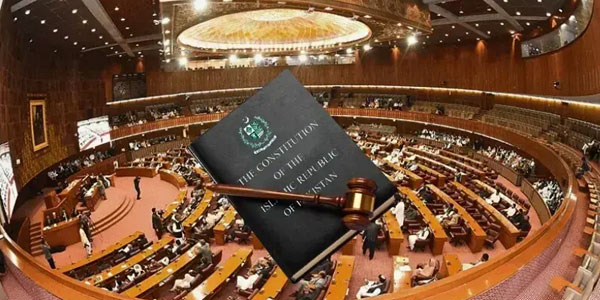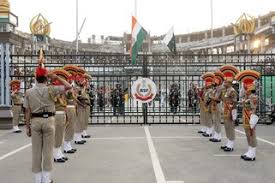
Pakistan’s 27th Constitutional Amendment: Key Changes in Judiciary and Chief Justice Roles
Dubai | November 13, 2025 | 0 | newsOverview
The National Assembly of Pakistan passed the 27th Constitutional Amendment Bill 2025 during a heated session in Islamabad, attended by Prime Minister Shehbaz Sharif, PML-N President Nawaz Sharif, and PPP Chairman Bilawal Bhutto-Zardari.
The bill, presented by Law Minister Azam Nazeer Tarar, introduces key constitutional changes — especially regarding the creation of the Federal Constitutional Court (FCC) and the roles of the Chief Justices in Pakistan’s judicial framework.
The bill was approved through both clause-by-clause and division voting and will now be sent back to the Senate for further debate and approval.
🏛️ Purpose of the 27th Amendment
According to Law Minister Tarar, the main objective of the amendment is to integrate the newly established Federal Constitutional Court into Pakistan’s Constitution and clarify the authority and continuity of the Chief Justice of Pakistan (CJP).
The introduction of the FCC means Pakistan will now have two top judicial positions:
-
The Chief Justice of the Federal Constitutional Court (CJFCC)
-
The Chief Justice of the Supreme Court (CJSC)
⚖️ Key Amendments Made to the Bill
1. Changes to Clause 2 – High Treason
Originally, Clause 2 focused on Article 10 (related to detention laws). However, it has now been replaced to address Article 6 (High Treason).
Under the new changes, the Federal Constitutional Court is added to the list of courts that cannot validate acts of high treason. The text now includes:
“… the Federal Constitutional Court, the Supreme Court, and a High Court.”
This places the FCC before the Supreme Court in the order, officially recognizing it as part of the judicial hierarchy.
2. Clause 2A – Role of the Supreme Court Chief Justice
The former Clause 2 has been relabeled as Clause 2A, confirming that it is the Chief Justice of the Supreme Court (CJSC) who will now form review boards for cases involving detentions under federal law.
3. Clause 23 – Composition of the Supreme Court
Article 176 defines the structure of the Supreme Court.
Previously, the proposed change aimed to make it clear that the Supreme Court would have its own Chief Justice, separate from the CJP.
However, confusion about continuity led to a new amendment. The revised clause ensures that the current Chief Justice, Justice Yahya Afridi, will continue as Chief Justice of Pakistan until his term ends.
The updated provision adds:
“Provided that, notwithstanding anything contained in the Constitution, the incumbent Chief Justice shall continue to be known as the Chief Justice of Pakistan during his term in office.”
4. Clause 56 – Definition of Chief Justice
Changes have been made to Article 260, which defines key constitutional terms.
A new subclause has been added to specify:
“Chief Justice of Pakistan” means the senior among the Chief Justice of the Federal Constitutional Court and the Chief Justice of the Supreme Court.”
This means that after the current CJP’s tenure, the senior-most judge between the CJFCC and CJSC will become the new CJP.
❌ Omitted Clauses
Several proposed clauses were removed from the bill during the session. These include:
Clause 4 – Presidential Oath (Article 42)
This clause aimed to replace the word “Pakistan” with “Federal Constitutional Court”, meaning the president would take the oath before the FCC instead of the CJP.
➡️ Omitted.
Clause 19 – Auditor General’s Oath (Article 168)
The proposed change sought to modify the oath-taking process of the Auditor General, replacing “Chief Justice of Pakistan” with “Chief Justice of Supreme Court”.
➡️ Omitted.
Clause 51 – Chief Election Commissioner’s Oath (Article 214)
This amendment proposed that the Chief Election Commissioner should take oath before the FCC, replacing the CJP.
➡️ Omitted.
Clause 55 – Oath of Office (Article 255)
Clause 55 proposed that if an official cannot take oath before the specified person, the Federal Constitutional Court could authorize another person to administer it.
➡️ Omitted.
🧾 Summary of the 27th Amendment Changes
| Section | Article Affected | Key Update | Status |
|---|---|---|---|
| Clause 2 | Article 6 | Adds FCC to list of courts that cannot validate high treason | ✅ Adopted |
| Clause 2A | Article 10 | CJSC to form review board in detention cases | ✅ Adopted |
| Clause 23 | Article 176 | CJP Yahya Afridi to remain in office for full term | ✅ Adopted |
| Clause 56 | Article 260 | Defines “Chief Justice of Pakistan” as senior among CJFCC & CJSC | ✅ Adopted |
| Clause 4 | Article 42 | Oath before FCC instead of CJP | ❌ Omitted |
| Clause 19 | Article 168 | Change in oath of Auditor General | ❌ Omitted |
| Clause 51 | Article 214 | Change in oath of Election Commissioner | ❌ Omitted |
| Clause 55 | Article 255 | Change in oath process | ❌ Omitted |
🏁 Conclusion
The 27th Constitutional Amendment Bill 2025 introduces a significant shift in Pakistan’s judicial system by formally establishing the Federal Constitutional Court and redefining the Chief Justice’s role.
These changes aim to modernize Pakistan’s constitutional structure and ensure clear separation of judicial powers between the Supreme Court and the newly created FCC.
Once approved by the Senate, the amendment will officially become part of the Constitution of Pakistan.


